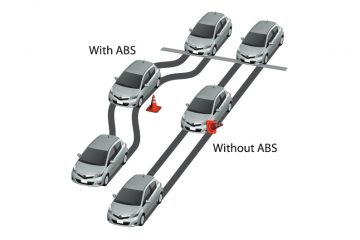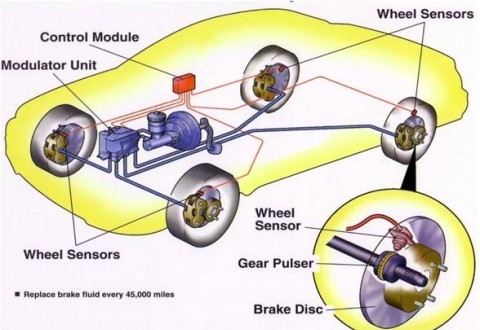The brake pad or brake pads of a car’s brake disc must be replaced as soon as it shows signs of damage or worn out state. So do the brake rotors. A car uses brake discs at least for its front wheels if not all wheels including those at the rear. A squealing sound whenever you step on the brakes, is a good sign that a brake pad or more has to be replaced. To save on repair expense, you can go do it yourself.
Tools and Materials Needed:
- C-clamp
- Jack Stand/s
- Wrench (depending on your car)
- Lug Wrench
- Gloves
- Dust Mask and Safety Glasses
- New Brake Pads and Rotors
- Bungee Cord or Hanger Wire
- Rubber Mallet
Step 1 – Elevate Your Car
Placed blocks under you car wheels (to keep it from moving) then loosen the lug nuts (without completely unscrewing) on the wheel whose brake pads you want to check and/or change. Lift the car using its jack and support with a jack stand. If you have extra jack stands, use them to keep the entire vehicle lifted. If not, work one wheel at a time. Refer to the user’s manual for proper usage of the jacks. Make sure it is stable and in no danger of falling.
Step 2 – Remove the Tire and Brake Caliper
Remove the wheels by unscrewing the nuts completely. Now, your brake rotor and brake caliper are exposed which needs to be replaced with new brake rotor. Unscrew the caliper from its bolts. As you lift the caliper, it will remain connected to the vehicle through the brake line. Using a hanger wire or bungee cord, secure the caliper so that it will not dangle from the brake line.
Step 3 – Inspect the Brake Rotor and Pads
If the brake rotor has grooves on it or is deeply scored, you either need to get it resurfaced or replaced. If you flip the caliper over, you’ll see the brake pads. Remove the pads by removing the screws or pins. If your pads look worn compared to the new ones, they need to be replaced.
Step 4 – Retract the Caliper Piston and Insert Slip In the New Pads
Uncap your brake fluid reservoir. Then using a C-clamp on the caliper piston – a cylindrical metal coming out of the caliper), turn the screw to make room for the new brake pads. Continue to tighten until your two new pads are properly installed into the caliper. Replace the pins and bolts that used to hold your brake pads.
Step 5 – Replace the Brake Rotor and Re-install the Caliper
Remove the brake rotor from the wheel lugs then slip in the new brake rotor, which you can get from Autopartway online store. Place the caliper with newly installed pads over the brake rotor in such a way that the rotor’s edge will be sliding between your two brake pads. Then re-install all the bolts.
Step 6 – Finish Up
Depress you brake pedal a number of times to check if it feels right. Put back your wheel by tightening the lug nuts. Lower your car back on the ground and test your brakes several times without moving too far.
Mistakes to Avoid:
1. During Step 2, don’t let the brake line dangle with the caliper. Handle the brake line with care to keep it from damage. Damage to it can cause brake failure.
2. During Step 6, don’t force the piston to retract if it refuses to. The one you have may be different and requires the use of a brake caliper tool. Buy one or borrow from your neighbor to continue with operation.
References
Patrick, George. “How to Change Brake Pads.” <http://auto.howstuffworks.com/auto-parts/brakes/brake-repair/change-brake-pads.htm/printable>



